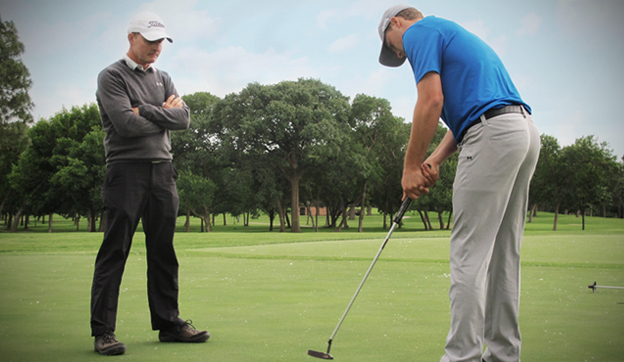IMPROVE MY GAME
Articles
Putting Practice with Jordan Spieth

Ranked 10th in the world going into the 114th US Open, 20 year-old Jordan Spieth has a game that belies his age. Aside from his attitude and poise, you could argue that putting is the strength of his game. Although he’s ranked 7th in the most important statistic on Tour (Scoring Average), his highest ranking in any individual category is 29th (Strokes Gained - Putting).
Jordan has been blessed with immense talent and athleticism, but he also boasts an incredible work ethic and mature approach to practice. TPI recently asked me to share a bit about Jordan’s practice routine. Below is a description of a putting drill that I implemented just last month.
ALTERNATE SPEED PUTTING DRILL
I have Jordan find two holes that are a good distance apart, maybe 40 feet. He places a club or stick 3 feet past the back edge of both holes. This is the safety zone that all putts must finish in (if they don’t go in the hole). He starts the drill by putting 10 feet from one hole, which means he has a 30-foot putt to the second hole in this example.
Jordan putts 3 balls to the 10-foot hole and if all 3 balls stop within the safety zone, he then putts 3 balls toward the 30-foot hole. If all 3 balls stop within the safety zone, he will now move his starting point 3 feet closer to the long hole and repeat the same process. So now the short target is 13 feet in distance and the long target is 27 feet. He’ll continue this process until he reaches the 10-foot distance on the original long target, 30-foot putt.
Jordan and I have a variety of touch training games we play, but we started using this one after Augusta. He was leaving everything short and I needed to create some constraints that demanded he convert (make putts) or at worst, leave the ball past the hole whilst not too far past. The alternating structure is to challenge him with variability; to disrupt his memory of previous force needed for success and therefore challenge recall. The great thing about this drill is that I can scale the constraints and rules up and down depending upon the skill of the player.
A skill like putting (or any other skill for that matter) can be separated into its critical components. I like to offer my players the opportunity to train those components in relative isolation; in this case we’re training touch. I think it’s important to identify that there are pieces of this skill precision puzzle that need to be “skill built.” Give your students skill building drills and games to identify and enhance their current level of precision (training each skill component on its own). Then test the “marriage” of variables to determine their ability to transfer their performance on course.
The video below demonstrates this drill in action:
